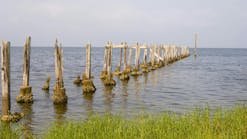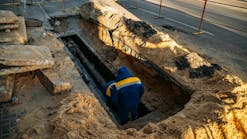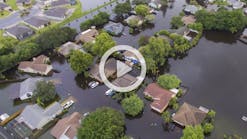About the author: Brian Giles is product manager for Schwarze Industries. Giles can be reached at [email protected] or 256.851.1133.
Do not let your sweeper take the summer off. Streets still need sweeping in the summer to prevent storm water runoff pollution. The amount of effort put into spring cleaning may be a distant memory by now, but in the summer and early autumn months your sweepers still can be powerful tools to prevent storm water pollution from reaching groundwater.
Spring cleaning is inevitable; there are piles of sand and debris in every intersection and the gutters have all but disappeared. We know we need to get the spring mess cleaned up before it gets ground up and washed away. If it does not get cleaned up, we know there will be plenty of complaints from the community to remind us.
The fall brings leaf season. Again, we know residents want the leaves out of the gutters and we need to stop decaying leaves from getting into the storm system and watershed.
Mindful of Fine Particles
Late summer and early autumn, when many of the sweeping personnel are out mowing and landscaping, there appears to be a lull in the need to sweep streets except for after parades and festivals. For preventing storm water pollution, this could not be further from the case.
It may not be obvious, but most of the material removed during the spring cleaning process is sand. There may be some salt and silt, but the material mostly is sand. Typically this sand size is in the PM65 to PM250 range. These sizes usually are not considered harmful to aquatic life as they will not stay suspended long and accidental ingestion by wildlife is not likely.
After spring cleaning and before leaf season, the streets appear to stay clean, and by volume there is significantly less material. However, this material typically is windblown dust from farming and construction activities and powder ground off the pavement by traffic. When measured, this material is PM2.5 to PM10 in size. Although there is less of it, it can be harmful to aquatic life. It can fill storm drains and catch basins, make drinking water treatment more difficult, and destroy river habitats. At these sizes, even heavy particles can stay mixed with water for a long period of time. Because these particles stay suspended and are so small, they can even be ingested by animals and impair their oxygen intake.
Summer Sweeping Tips
Regenerative sweeping technology is efficient at removing this smaller material. Mechanical sweeping technology, which can remove up to 80% of this material, is less efficient, but is preferred to not sweeping at all. Many people are aware that street and parking lot sweeping is a U.S. Environmental Protection Agency (EPA)-recognized storm water BMP, and many permit applications and plans specifically call for “regular sweeping.”
While getting the small harmful particles out of the watershed is the first step, it also is critical to keep these particles out of the storm water system. Avoid dumping these fine particles in piles where they can be rewashed into the watershed. Unlike the sand brought in from spring cleanup that will stay settled where you put it, the finer summer material can float away.
Extra-fine material should be covered, capped or separated from possible runoff areas by a 100- to 200-ft vegetation buffer that allows the fines to stabilize and not float off. EPA storm water BMPs always consider good housekeeping a must.
It might be OK to give your sweeper a few days off in the summer, but do not lose all the storm water pollution prevention benefits your sweeping program has brought.
Download: Here







